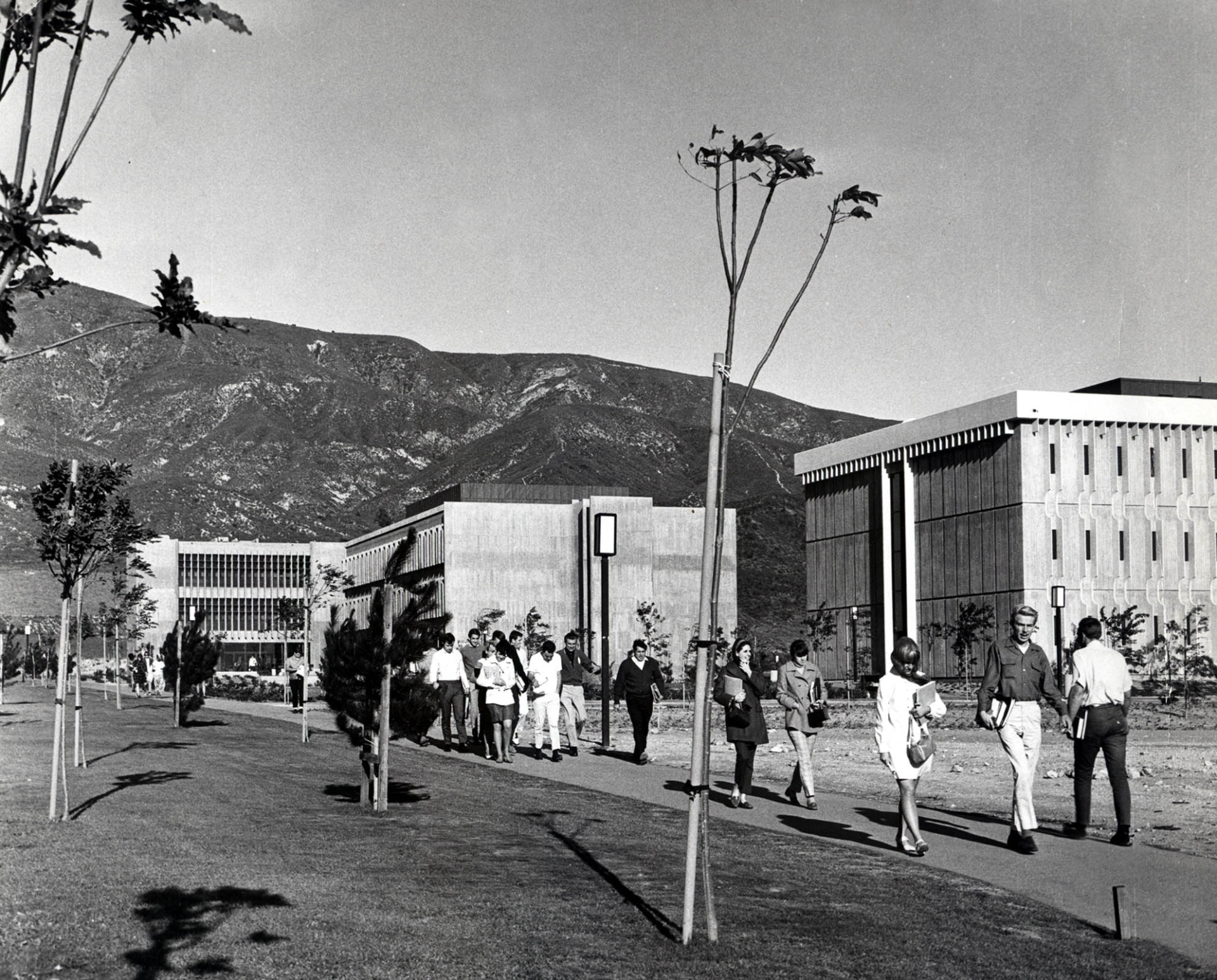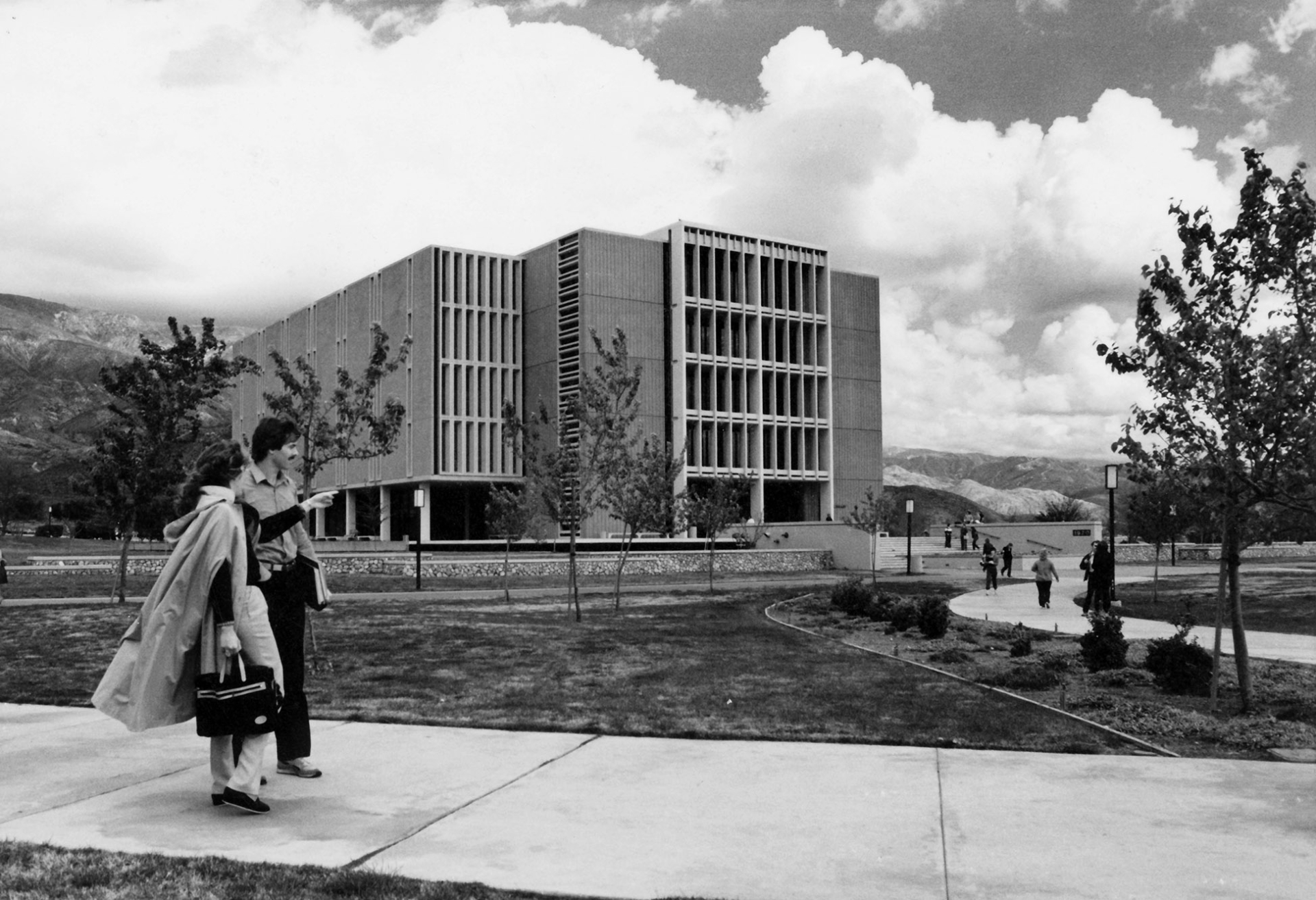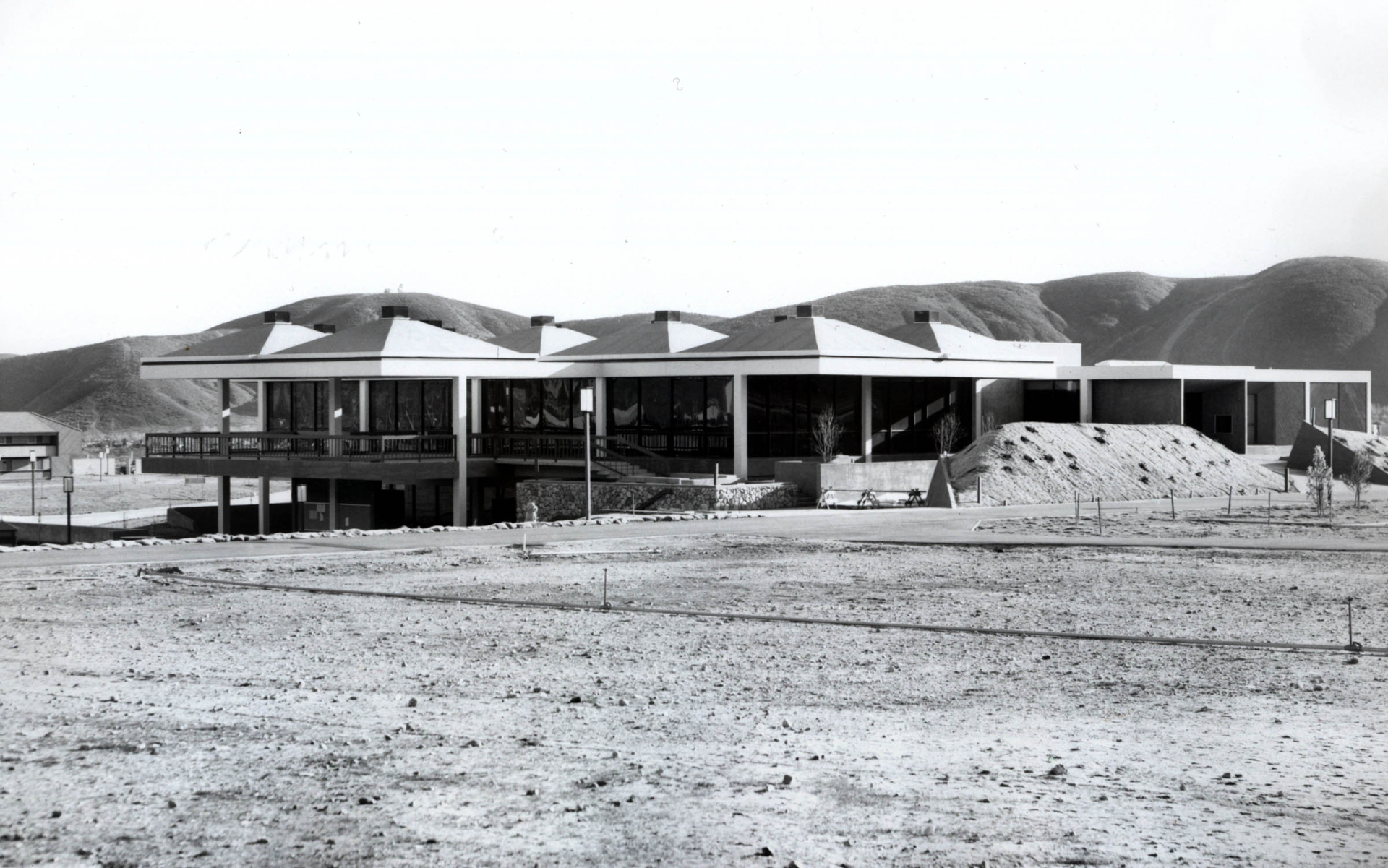Alan Llavore | Office of Marketing and Communications | (909) 537-5007 | allavore@csusb.edu

Academic year 2025-26 marks the 60th anniversary of the first classes held on the campus that would come to be known as California State University, San Bernardino. These last 60 years have seen tremendous changes, not only in the campus itself (which has expanded from San Bernardino to an additional, separate campus in Palm Desert) but also to the number of colleges, programs, degrees and students.
As the world outside the campus has changed, CSUSB has continued to pursue the heart of its mission: serving the people of the Inland Empire and growing the success of individuals, families and communities through access to an outstanding institution of higher education.
The 1970s demonstrated that the campus would continue to offer a robust collection of talks by a wide range of distinguished speakers, performances (musical and theatrical), arts shows, and multicultural and athletics events in addition to growing its academic offerings and faculty. In other words, the decade established the then-named California State College at San Bernardino (CSCSB) as a vibrant higher education institution and community.

The college began the decade with an authorized enrollment of 2,240 students. Although no graduate degrees would be awarded yet, 250 students were enrolled in the fifth-year teaching credential program or in scattered courses, which carried graduate and upper-division credit.
The Western Association of Schools and Colleges reaccredited CSCSB for five years. The six-week Operation Second Chance program, the first of its kind in San Bernardino, was constructed to give underrepresented youth an opportunity to study and work in an intensive, tutored summer session. Ethnic studies options within the fields of history and sociology were introduced, providing students the opportunity of concentrating in either Mexican American or Black studies. Leta M. Adler was named a professor of sociology, making her the first woman full professor at CSCSB. And work began on what was called the Residence Halls complex.
With construction completed on the five-story Library-Classroom building in 1971, the library collection was moved to the campus’ newest and largest structure. This was the first library in the CSC System to be completely carpeted and the second largest building designed for human occupancy in San Bernardino County (the largest was Loma Linda University Hospital). The old Library Building was renamed the Student Services Building. Construction began on the Commons.

The campus began a trial program of Student Evaluation of Teaching Effectiveness, or SETE. The CSC implemented a Common Admissions Program. The traffic signal at the corner of Kendall Drive and State College Parkway was completed. Gov. Ronald Reagan signed a bill renaming the CSC System as the California State University and Colleges (CSUC).
In 1972, the college became a residential campus with the opening of dormitories in Serrano Village. That same year, the institution initiated its first graduate program, a master of arts in education, and President John M. Pfau approved the Faculty Senate’s recommendation that the foreign language requirement for graduation be dropped. In response, an editorial in The Pawprint stated, “The dream is ending: the ‘Swarthmore of the West’ is dead.” The Commons opened as the campus’s main dining hall – atwo-level, $1.3 million facility with seating for more than 600.
In 1973, CSCSB hosted the Black Cultural Festival, which brought 500 local high school students and soul singer Billy Paul to campus. That year, the college awarded its first master’s degree, which was in elementary education and adopted a new recruitment slogan: “Learning is not a sink-or-swim proposition at Cal State, San Bernardino,” emphasizing its focus on providing tutorial services to struggling students.

Federally funded educational opportunity programs, including Upward Bound, launched on campus in 1974 to enhance the college-going rate of students from disadvantaged backgrounds. That year, CSCSB students participated for the first time in the annual Model United Nations program in New York City, representing the country of Kuwait, and the CSUC System adopted a policy on nondiscrimination and affirmative action at all its member campuses.
The college celebrated its 10th anniversary in 1975, and the groundbreaking took place for the Creative Arts building. The Receiving, Mail and Campus Stores building was completed, covering an area of 3,200 square feet. The campus offered its first televised course for credit, on ethnic minorities, on Channel 24 in San Bernardino (KVCR) and Channel 62 in Riverside. That year, 43 of the original 93 faculty and staff were still on campus. CSCSB unveiled its new main entrance at the corner of State College Parkway and Northpark Boulevard, and the library opened its south entrance to the public for the first time.
In 1976, construction began on the $860,576 Student Union. All costs were paid from student fees and the sale of revenue bonds, which were repaid from future student union fees. The Computer Center installed a Digital Equipment Corp PDP 11/45 computer that supported eight simultaneous users on terminals in four campus buildings. The CSCSB Child Care Center, with the support of a $6,675 grant from the California Department of Education, opened on the Kendall Elementary School Campus in San Bernardino.

The library acquired its 250,000th volume in 1977. In addition, the college bookstore opened, as well as the Creative Arts Building. In collaboration with the College of the Desert, new bachelor of arts degrees in liberal studies and social sciences were approved. The Faculty Senate approved a constitutional amendment allowing a student representative to serve as a voting member of the Senate for the first time. The campus approved a policy to allow retired CSCSB personnel to use its recreational and library facilities at no charge.
The college was able to state, “Cal State, San Bernardino [now] leads all of her system campuses in the California State University and Colleges System in percentage increase in actual student enrollment, and ranks second in full-time-equivalent student percentages.”

In 1978, the 15,000 square-foot Student Union officially opened. The union housed a multi-purpose room for dances, lectures, films, etc.; student government offices and a school newspaper office; a “noisy room,” which had two billiard tables, a pinball machine and ping pong tables; a vending machine room and snack bar; and a lounge with a fireplace and an outdoor patio. Students voted to change the name of their government organization from Associated Student Body to Associated Students Inc. Gov. Jerry Brown appointed Kevin Gallagher as student government president, to the CSUC Board of Trustees. Construction began on the Student Health Center.
The Fine Arts Building was remodeled during the 1978-79 academic year to include ceramics, sculpture, woodworking, furniture design and weaving studios. The Student Health Center opened that year. College police began providing an escort service for students, faculty and staff. Also, the Higher Education Employer-Employee Relations Act took effect in 1979, authorizing system employees to participate in collective bargaining.